Marion Mets Newsletter – Issue 33
Can you imagine Reggie Jackson playing for the Marion Mets?
It could have happened. Maybe.
Here’s how:
The New York Mets, Marion Baseball’s parent organization from 1965 to ‘76, held the No. 1 pick in Major League Baseball’s amateur draft in the summer of 1966. The Mets earned the premium draft slot following a dreadful ‘65 season in which the Metropolitans won only 50 of their 162 games.
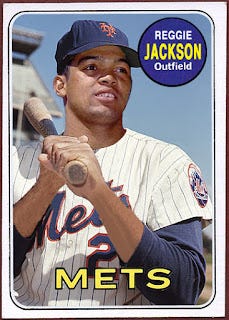
Reginald Martinez Jackson was one of the top young talented players up for consideration in the June draft. As a sophomore at Arizona State, he impressed scouts all around the Majors. He was an exceptional athlete who could hit for average and power, and he possessed blazing speed while patrolling the outfield for the Sun Devils.
Reggie was a can’t-miss Major League prospect.
“He’s the talk of the scouts,” said his Arizona State baseball coach Bobby Winkles, about two months before the draft.
But Reggie, it seems, was never quite in the Mets’ plans.
Casey Stengill had just retired from managing the New York Mets’ and, in the spring of ‘66, was in charge of scouting the western U.S. for the team. Stengill had his heart set on a player other than Reggie: Steve Chilcott, a 17-year-old catcher out of Antelope Valley High School in Lancaster, California. Stengill watched Chilcott play just one game in high school a couple of months before the draft. The lefty slugger smacked four hits in the four times he came up to bat.
“One look is enough for me,” Stengill said of Chilcott. “This boy has all the tools to become a major league hitter.”
Indeed, Chilcott had a terrific senior season at Antelope Valley. He hit .500 or .506 – his batting average varies in different newspaper accounts – with 26 extra-base hits, 11 home runs, nine doubles and six triples. Plus, he knocked home 33 runs and was voted player of the year in his high school’s seven-team league.
But Reggie?
Almost every team in the Majors had eyes for Reggie Jackson. At Arizona State, he batted .327 in 52 games. He hit nine doubles, six triples, drove home 65 runs and stole 15 bases.
But on draft day, the New York Mets picked Chilcott. The Kansas City Athletics were delighted to select Reggie with their No. 2 pick.
“I was amazed,” former A’s owner Charlie Finley recalled in 1993. “I still can’t figure out to this day how the Mets made that decision. Selecting Reggie was easy.”
Almost everyone at the time of the draft was surprised at the Mets’ decision to take Chilcott, who had converted from third base to catcher for his senior year in high school.
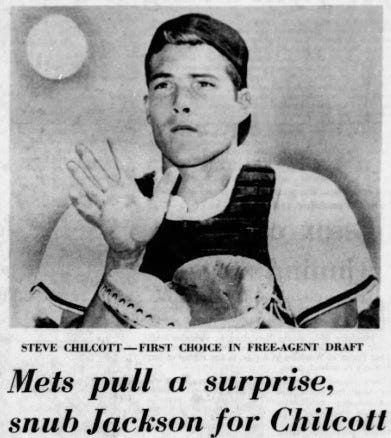
Twenty-five years after the draft, Joe McDonald, who worked with the New York Mets’ farm system in ‘66 and often spent time observing players in Marion, told New York Daily News columnist Vic Ziegel in 1991 that the Mets “didn’t have a single catching prospect” in their minor league system.
The Mets needed a catcher, they said.
But Reggie didn’t see it that way.
In the summer of ‘69, when the Mets and Reggie’s Athletics, now having relocated to Oakland, sported identical 53-29 records, a reporter asked Reggie if he ever woke up “screaming at the thought” that he could have been a New York Met.
Odd phrasing of a question, right?
“I know the reason they [Mets] didn’t sign me, and it isn’t what they say because I spoke with people in baseball who know, and they told me,” Reggie replied, according to a Daily News article published July 22, 1969. “Now, every time I hit a home run, I smile and look over there. I know they can use a man with 37 homers and 79 runs batted it.”
(Yes, Reggie was producing astronomical home run numbers by mid-summer. He hit homer No. 37 the same day Apollo 11 landed on the moon.)
Someone then asked Reggie, “Are you saying it was color?”
He replied, “It’ll all come out in due time.”
When the Mets were asked to respond, a front office employee said – this is according to that same Daily News article – “You can call us wrong, but not prejudiced.”
In his 2013 book, “Becoming Mr. October,” Reggie wrote that Winkles told him a day or two before the June draft, “‘You’re probably not gonna be the No. 1 pick. You’re dating a Mexican girl, and the Mets think you will be a problem. They think you’ll be a social problem because you are dating out of your race.’”
The reasoning made little sense to Reggie, whose father, Martinez Jackson, was half Puerto Rican.
“No, you’re colored, and they [New York Mets] don’t want that,” Reggie wrote, recalling his college coach’s words.
Reggie noted in his book, too, that he never saw Stengill at any of his Arizona State games. Remember, Casey was scouting out west in the spring of 1966.
“I know I never saw Casey Stengil when I was being scouted,” Reggie wrote in “Becoming Mr. October.” “And, how could you be in a ballpark and not know if Casey Stengill was there?”
Folks sure knew Casey was around when he watched Chilcott play.
“I took a look at the stands, saw a big crowd gathered in one spot, and sure enough, there was Mr. Stengel right in the middle,” Chilcott recalled soon after the draft. “The fans were asking for his autograph.”
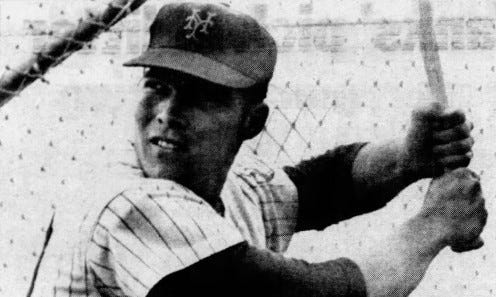
Chilcott signed a $75,000 bonus with the Mets, who sent him to their rookie league affiliate in Marion, Virginia, to kickstart his development into a professional baseball player. He welcomed the idea of beginning his Mets career at a low level with players his age.
I “like their farm system,” Chilcott told the Los Angeles Times the day he was drafted. “They have a rookie team [Marion Mets] for kids right out of high school and college, and that sounds very interesting.”
Chilcott got off to a slow start, hitting just .226 with two extra-base hits in 36 plate appearances.
That Marion Mets team, led by future big leaguers Mike Jorgensen and Jerry Morales, went on to win the Appalachian League championship.
In early August, the New York organization promoted Chilcott to Auburn of the New York-Penn League. He hit .188 there.
Chilcott spent the winter of ‘66 in the Florida Instructional League and came out swinging the following summer with the Mets single-A affiliate in Winter Haven, Florida. There, he hit for a solid .290 average with six home runs, 20 doubles, four triples and 45 RBIs.
This was the production the New York organization had hoped for when they drafted the catcher with their No. 1 pick.
But then…
Chilcott injured his arm that season diving back to second on a pickoff attempt by the opposing pitcher. His right shoulder popped loose. He was never the same player.
“I just couldn’t throw the ball hard enough to break a pane of glass,” Chilcott told the Los Angeles Times in 1994.
Reggie, on the other hand, ripped the cover off the ball his first season in the minors. Soon after the draft, the A’s sent their new star to Lewiston, Idaho, where he played 12 games before getting promoted to Modesto in the California League. There he hit .299 and 21 homers.
So, if the Mets had drafted Reggie, would they have sent him to Marion to begin his career? It’s hard to say, but if he did, he likely would have been reassigned to a higher level pretty quickly.
Still, it’s fun to think of him in the same lineup – here in Marion – with the slugging duo of Jorgensen and Morales.
Just think of how many moon shots Reggie could have launched out of Marion Stadium and onto the railroad tracks. He was that kind of superstar, ya know.
Reggie made his Major League debut with the A’s in 1967. It was the beginning of a 21-year Major League career. He played in five World Series – Reggie was the MVP in two of those – was a 14-time all-star, a league MVP and, in 1993, he was inducted into the baseball hall of fame.
While injuries derailed Chilcott’s path to the Majors – he never made it past Triple A – Reggie made a name for himself with the A’s, but mostly in New York with the Yankees, and became the straw that stirs the drink.
Before you go, this is a reminder that I’m always looking for stories about the Marion Mets. If you were a player, fan, ball boy, concession stand worker… anything… and have a story to share, I’d love to hear from you. You can reach me at chadoz97@gmail.com. Also, if you see something I missed or got wrong, send me a note.
And don’t forget to Connect with Marion Mets on Facebook.




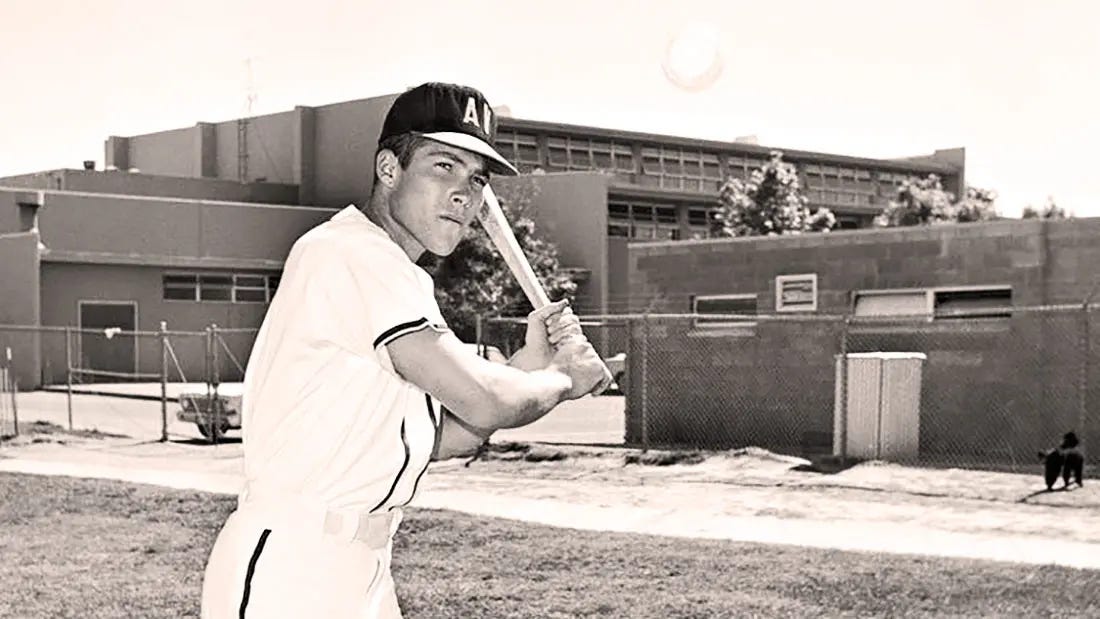
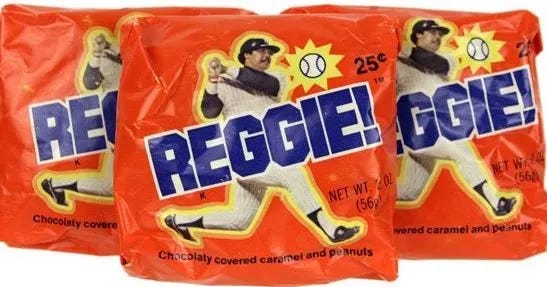
Love the 1969 "Mets" Reggie.
Cool write up.